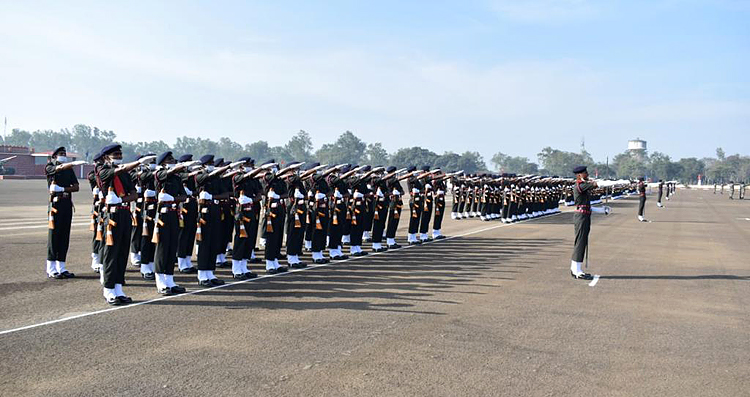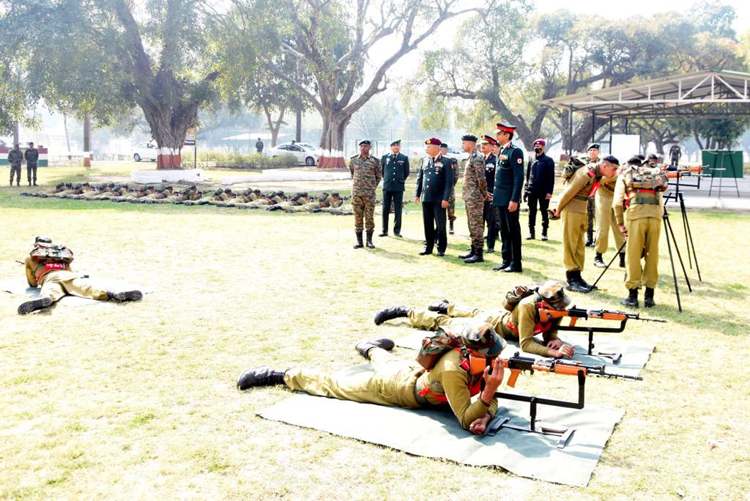INDIAN ARMED FORCES CHIEFS ON OUR RELENTLESS AND FOCUSED PUBLISHING EFFORTS

The insightful articles, inspiring narrations and analytical perspectives presented by the Editorial Team, establish an alluring connect with the reader. My compliments and best wishes to SP Guide Publications.

"Over the past 60 years, the growth of SP Guide Publications has mirrored the rising stature of Indian Navy. Its well-researched and informative magazines on Defence and Aerospace sector have served to shape an educated opinion of our military personnel, policy makers and the public alike. I wish SP's Publication team continued success, fair winds and following seas in all future endeavour!"

Since, its inception in 1964, SP Guide Publications has consistently demonstrated commitment to high-quality journalism in the aerospace and defence sectors, earning a well-deserved reputation as Asia's largest media house in this domain. I wish SP Guide Publications continued success in its pursuit of excellence.
- MoD initiates comprehensive review of Defence Acquisition Procedure 2020, pushes for defence reforms
- G7: The Swansong
- Kalinga Connect: South Asia to Polynesia
- Must Credit DRDO for Operation Sindoor, now what is next for defence R&D?
- The layered Air Defence systems that worked superbly, the key element of Operation Sindoor
- Operation Sindoor | Day 2 DGMOs Briefing
- Operation Sindoor: Resolute yet Restrained
Cutting Army Flab
Reports are that Army has been asked to reduce its strength by about 1.5-2 Lakh. How much Army manpower should be slashed and what constitutes “flab”?
 |
The Author is Former Director General of Information Systems and A Special Forces Veteran, Indian Army |

Periodic media reportsstate that the Army is set to cut its flab. Some use the preferred cliché that the Army is actively working on improving its "tooth-to-tail" ratio and that several proposals are being looked at. Some of these proposals are described as slashing "tradesmen and legacy units", outsourcing logistics support services and restructuring the Rashtriya Rifles (RR) deployed in J&K for counter insurgency. The other favourite terms are that the Army certainly needs to be "leaner and meaner" and the "ballooning pension bill" leaves little scope for modernisation.
Such exercises have been the norm over the past decades. One study about three decades back was examining slashing barbers altogether but then better sense prevailed. Presently, the media quotes an unnamed official saying that the Army can slash some 80,000 tradesmen - like cooks, barbers, washermen and safaiwalas. There is no mention of alternatives, like without cooks, is the food to be ordered from Zomato or Swiggy? Same goes for other categories of tradesmen. Outsourcing of logistics can only be recommended by a drug addict.
The right way to do this is to first spell out a National Security Strategy (NSS) and a Comprehensive Defence Review (CDR), which would dictate structural changes required and the quantum of manpower required
Two years back the media mentioned that the Army has been asked to reduce its strength by about 1,50,000-2,00,000. How much Army manpower should be slashed, what constitutes "flab", outsourcing logistic support services or increasing/decreasing manpower in selected areas can't be based on perception of people in position however high they may be. The right way to do this is to first spell out a National Security Strategy (NSS) and a Comprehensive Defence Review (CDR), which would dictate structural changes required and the quantum of manpower required. Ad-hoc changes will land the country in disaster.
In absence of the NSS and CDR, the 800-km frontage in Eastern Ladakh was being held by just one Army Division and we know what happened after the Chinese aggression in 2020 – rushing in almost another two Divisions worth. It would be naïve to think that such contingencies would not occur in the future given China's intent and claims on Indian Territory from Ladakh to Arunachal Pradesh.
Besides, we need to acknowledge the criticality of manpower in the middle of war fighting including shifting ammunition, carrying other important material, evacuation of casualties and the like. The Army is procuring robotic mules but these can perhaps only be supplements, not replacements. The US anyway shelved further development of its robotic mule – LS3. Besides, China Mule-200 moves on a tracked chassis, not four-legged ones like we are procuring.

China maintains the largest army in the world though none of its neighbours would attack it. India has the second largest army in the world but look at the extent of our unsettled borders, difficult terrain, hostile terrain and Army's involvement in counter-insurgency and counter-terrorists operations within our own territory. Compared to the Indian Army's strength of 12 lakh, Pakistan army has an active strength of 5,60,000 but look at the borders and commitments of both armies.
One Division worth of RR was moved to Eastern Ladakh following the Chinese aggression in 2020. Now there is talk of restructuring RR due to perceived normalcy in J&K. But the terrorist attacks in Rajouri over two-days should open our eyes to the fact that with Pakistan as the neighbour we should not expect normalcy in J&K unless we transport the proxy war across the Line of Control (LoC) and repay every terror attack within 24 hours.
We need to acknowledge the criticality of manpower in the middle of war fighting including shifting ammunition, carrying other important material, evacuation of casualties and the like.
RR formations are to hold ground in the event of own offensive anyway, so what restructuring are we talking of unless the policy makers want to replace RR battalions with CRPF battalions perceiving the latter to be better than RR units? At the same time, we need to take into consideration increasing instability in Pakistan and its likely spillover into India as Pakistan gets Talibanised.
As regards the "ballooning" defence pension bill, despite successive Central Pay Commissions and Parliament recommending transfer and absorption of military personnel after their military service into government organisations and departments where their unique skills, training, discipline and strengths can be optimally used, government has lacked the will due to dependence on bureaucracy and obstruction by vested lobbies.

By singling out Armed Forces pensions, similar expenditure on other services is brushed under the carpet. Take the civilian-defence employees alone, who enjoy much faster promotions, get NFU and retire on the highest posts. Pension for them will remain applicable till 2040. Besides, all services under NPS get additional pay while in service.
Last year the Centre acknowledged that 10 lakh government jobs are lying vacant. Many more jobs would be lying vacant in States and Union Territories cumulatively. Sharing of the pension burden between the Government and public sector could depend on who gives the job to retiring military personnel. But no government gave a second job to retiring military personnel.
Defence Minister Rajnath Singh has said that the 'Agnipath' concept has nothing to do with money although this was the direct acknowledgment of the country's dire economic situation, particularly as far as defence is concerned. There is little doubt that Agniveers would 'weaken' the cutting edge of the Army. But asin the case of retiring Army personnel, Agniveers going out after four years military service are unlikely to be given government jobs other than like security guards despite the political discourse.
We need to take into consideration increasing instability in Pakistan and its likely spillover into India as Pakistan gets Talibanised
Lack of NSS and CDS has resulted in adhoc defence allocations. The annual defence budget allocations till the Chinese aggression in 2020 were negative in actual terms. Since then, emergency procurements reinforce the adhoc approach to national security; not institutionalized as the case should be. Defence Budget 2023-2024 leaves little scope for modernisation.
A veteran scholar says, "The moot point is how do you decide on the defence budget in absence of a national strategic security plan to which budgetary defence allocations must align to? Moreover, anything short of minimum 3 per cent of GDP allocation will not meet the requirement. It stands less than 2 per cent today. It is doable if the government cuts down freebies, which serves no purpose. It is all politics." Another scholar writes: "Putting a two-rupee ladoo in the mouth of soldiers does not fool anybody."
On becoming President of France, Charles de Gaulle hiked defence allocations consistently for a number of years to make it a strong nation. In our case, the knee-jerk approach would likely continue because of vote-bank politics.





